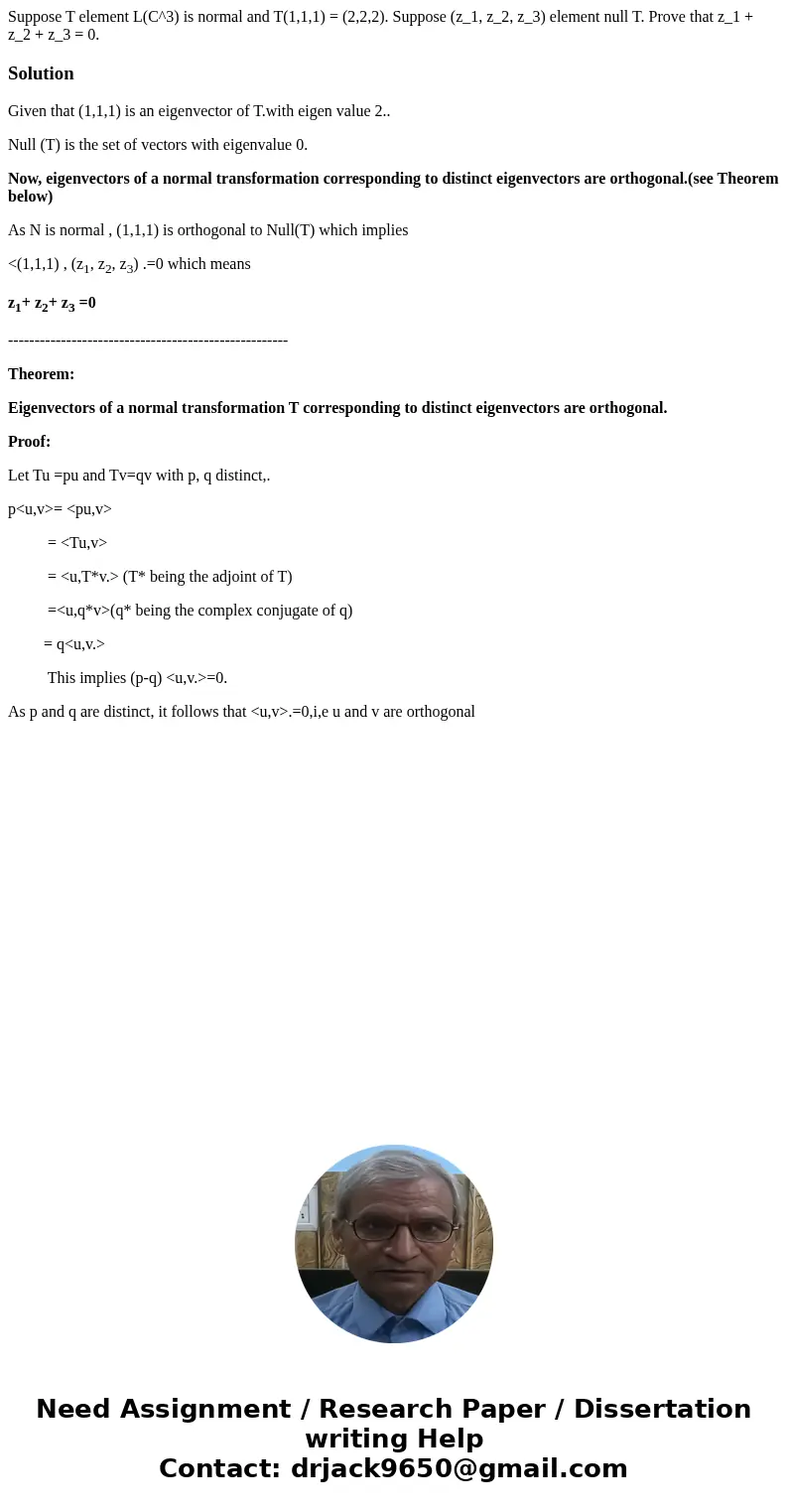Suppose T element LC3 is normal and T111 222 Suppose z1 z2
Solution
Given that (1,1,1) is an eigenvector of T.with eigen value 2..
Null (T) is the set of vectors with eigenvalue 0.
Now, eigenvectors of a normal transformation corresponding to distinct eigenvectors are orthogonal.(see Theorem below)
As N is normal , (1,1,1) is orthogonal to Null(T) which implies
<(1,1,1) , (z1, z2, z3) .=0 which means
z1+ z2+ z3 =0
-----------------------------------------------------
Theorem:
Eigenvectors of a normal transformation T corresponding to distinct eigenvectors are orthogonal.
Proof:
Let Tu =pu and Tv=qv with p, q distinct,.
p<u,v>= <pu,v>
= <Tu,v>
= <u,T*v.> (T* being the adjoint of T)
=<u,q*v>(q* being the complex conjugate of q)
= q<u,v.>
This implies (p-q) <u,v.>=0.
As p and q are distinct, it follows that <u,v>.=0,i,e u and v are orthogonal

 Homework Sourse
Homework Sourse